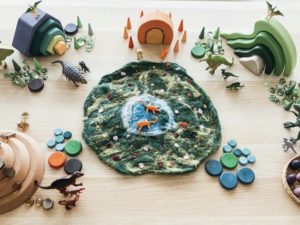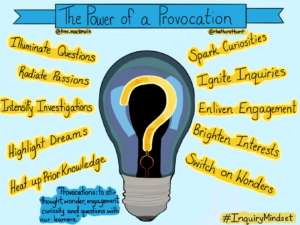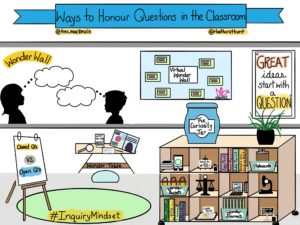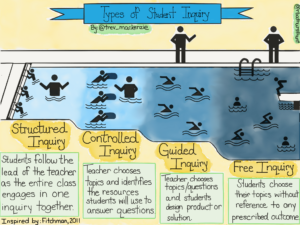Category: edci335
Hello Pod#4!
Well done on your Interactive learning Design on Art of Expression! I love your activity ideas, website layout, the simplicity, and click buttons(hyperlinks)that take me to certain pages without me having to scroll all the way up, look for what I need, then move on to next.
Following are some more of my detailed comments on your ILD! 🙂
Comment on your Activities:
I think your descriptions and rationales were well written and easy to follow. Your activities were very well organized and engaging too! I like how you mentioned how colour wheels can also be used by children with colour blindness. Even if they can’t see colours well, they can still see them in grayscale and recognize how each colour relates to others! I also liked the part where you included teamwork exercise and individual exercise especially because this allows the learning resource to be a hybrid of in-person and online! It allows us to educate ourselves through times like now where we have to limit interactions with others. Lot’s of variation!
Comment on your Assessment Plan:
I really like how you laid out your assessment plan page. Not only your group included the chart on National Core Arts Standards, but you also added short descriptions on what each section overall means. To be honest, I didn’t quite understand what the chart was trying to say until I read the short description underneath. Those descriptions gave me a really good understanding on what your group is trying to do!
Comment on your Technology page:
I think the Technology page is also very well written. I like how your learning resources provide two ways to do your activity – both in person and online. You mentioned in your resources too, but in person/hands-on activities are crucial especially when teaching art. Considering the trendy matter “Covid19”, some may say, “Well, that’s for when things are back to ‘normal'”. However, your group did not fail to provide a solution to this. You suggested ways to conduct activities virtually that are as effective as doing it in person. Nice job!
Comment on your Inclusion page:
Good idea on having the definition for “Inclusive Design” at the very beginning! I think it helps the readers get their focus back straight especially after going through different pages on the website until they get here. This page introduces ways to include people who are colour blind and deaf, along with the challenges they have. I think the hyperlink to “usabilla” is really helpful because it gave me an idea of what it’s like to not be able to see certain colours. I think having an idea vs having no idea on what it’s like to have those challenges make a huge difference when sharing art or working together to create art.
One tiny thing about this section – I am also not a native English speaker, so correct me if I am interpreting this incorrectly, but I was slightly confused by what you meat on this specific sentence “Here is an even worst example that people are blind but still can create art base on multi-sensory development learning.” Did you mean “Here is a better example….?” or did you mean something else?
Also this is a suggestion, but since your group found a really cool site and video on a girl who creates art by feeling things through her body, maybe have the hyperlink to the video on “‘Here‘ is another example…” instead of hyperlinking it on to the title, “Loss Hearing”. I think that will catch more attention, because I almost missed this website page if I didn’t bring my cursor onto the title!
One last thing, about the overall format about your website – I think if you move the tab (on top of your website) “Descriptions & Rationals” after “overview”, but before “Modules”, I think the viewer will be able to follow your website even better, because Description & Rationals contains information that give better understanding on why your modules/lessons are planned the way they are planned! 🙂
Nice work Pod #4!

Sunset from Mt.Tolmie – Anna Kato
Hi everyone!
It is crazy that we are already half way through the semester, and that we are also almost hitting the end of the year! Honestly, what a year.
Anyways, lets’s look at the topic for Blog Post #3.
“How will your interactive learning resource specifically ensure that the needs of all learners can be met?”
First of all, let me briefly explain what our group is working on.
We are using Inquiry based approach for our interactive learning resource. Our topic is D i n o s a u r s🦖, and we are targeting grade 1 students.
Subtopics we are covering are as follows:
- History and Origin of dinosaurs
- Types of dinosaurs
- Extinction
- Dinosaurs and Environment
Inquiry based learning is co-planned by teacher and students. Teacher and students communicate throughout the unit so that they can modify lessons (if necessary) depending on what and how students want to learn about the suggested topics.
Inquiry based approach gives many options for students to explore, deepen their understandings, present, and share and show their learning. Using this approach, learning becomes more visible.
Students will be an expert in their area of focus and will be able to gain ownership of their learning. For those who are not familiar with Inquiry based approach, please check my previous blog or Candice’s post for these might give you a better understanding on what my group is trying to do!
Everyone learn differently and present their learning different. Some like to take time, some are visual learners, some are very good with technology, some are very good at writing, etc… So, in our interactive learning resource, options are given to students on how they’d like to learn on the topic that we are focusing, and how they’d like to present and share their learning.
Here are some examples on how that may look like depending on the types of learners:
- For ‘bookworms’📚 – They are free to use books, brochures, magazines, encyclopedia, or any other resources that are available at the school/classroom/public library, etc.
- For the (visual and) techy type🖥 – they are more than welcome to use the school’s technology such as chrome book, PC, and iPad to search up videos, photos, facts, etc. to conduct research.
- The social type🗣 – These students may go do an “interview” on the school librarian, other teachers, their family members, or really, anyone who is an expert on that field or anyone who can help them further their learning.
Now let’s talk a bit about possible presentation method.
If your students are…
- Artsy and crafty type 🎨 – creating a mini museum booth in one section of the classroom so that other students can come take a look at their work and learn from it through them. Creating a story book is also another option.
- Hands-on/drama type🎭 – Students can (maybe be a dinosaur) act out a play for the class audience. They may use trees (that they found outside), blocks, felts, or even create their own ideal props to share their learning.
*Teachers, don’t forget to film this for documentation!
- Video editing, ‘YouTuber-like’ type 📹 – these students are welcome to create a short video (possibly with a grownup’s help with this age group, or with peer’s help) that talks about what they learned or filming their story telling possibly using props such as felts, Dino figures, Dino eggs, etc.

Example of story telling props – image retrieved from Rebecca Bathurst-Hunt @inquiryteacher on Instagram
Lots of time will be given in class, and possible equipment rentals will be considered for keen learners who doesn’t have resources at home, but would love to work on it more at home.
Reference:
Bathurst-Hunt, Rebecca [@inquiryteacher]. (2020, February 15). Dino vibes coming in! [Instagram photograph]. Retrieved from https://www.instagram.com/p/B8m8lkxBgdt/?igshid=xyjorhhk9eqn
Great post on Inclusive Learning, Harleen!
I believe that getting to know your students (what they are good at, their challenges, etc.) is very important, whether it be through intelligence test or even through something else! When I was doing my practicum in an elementary school, I hung out with my students during recess and lunch break so that I get to know them (and some other students from different class) better. When I knew my students better, my lesson planning improved because I can consider their needs, and plan accordingly. For example, when I had a student who struggled in writing and drawing, but had fantastic ideas and computer skills, I let him create his learning “booklet” on google slides whilst other students hand-made their learning booklet. This student used to not participate in any activities that required writing or drawing, but as soon as I gave him this option, he was like a different person.
Harleen also said something that really struck me at the end.
“I would not be teaching students as a whole and gluing them together as one person. But that they are all individual people, who have individual and unique methods to learn.”
I strongly agree to what she said. You as a teacher will want to be open to new ideas, have flexible mind, and be willing to adapt and change if necessary. It is important to provide students with options on how they want to learn and how they want to show their learning if you want to draw out their full learning experience.
Hi everyone!
I decided to look deeper into Inquiry based approach for our second blog post!
Mara and I formed a learning pod with Elementary Education in mind, and I’d like to talk a bit about what is Inquiry based learning, how to use this approach, what is so special about it, and some of my personal thoughts on it today.
First of all, let’s go over the definition.
Inquiry – “The dynamic process of being open to wonder and puzzlements and coming to know and understand the world” – Alberta Focus on Inquiry, 2004
Inquiry-based learning – “A process where students are involved in their learning, create essential questions,investigate widely, and then build new understandings, meanings, and knowledge. Knowledge is new to the students and maybe used to answer their essential question, to develop a solution, or to support a position or point of view. The knowledge is usually presented to others in some sort of a public manner and may result in some sort of action.” – Alberta Focus on Inquiry, 2004
Inquiry based approach allows students to take a lead/control on their learning, follow their curiosity, while scaffolded the general process by the instructor (aka classroom teacher).
What does this exactly mean… Let’s look deeper into this.
So how do we start this?
First, let’s take a look at this image that shows the overall process of this learning approach.
- Determine your focus.
Are we exploring your passion? Delving into curiosity? Aiming for a goal? Or taking on a new challenge? (This is also known as the four pillars of inquiry).
Example topic: Spider - Come up with an essential question.
This could come from you or from your learners. Provide provocations such as prompts, videos, books, activities, etc. to motivate students to explore and further their curiosity and passion.

https://www.trevormackenzie.com/posts/2018/2/13/the-power-of-the-provocation
Example: How do spiders survive? - Brainstorm questions.

https://twitter.com/trev_mackenzie/status/974621277313941504/photo/2
Example: What do spiders eat? Where do they live? How do they protect themselves? - Brainstorm subtopics.
In this case, give students few kinds of spiders that they could possibly look further into. - Select a subtopic.
Example: 5 students pick jumping spiders, 4 students pick tarantulas…etc. - Access prior knowledge.
In small group, brainstorm what they already know about these spiders and record them and share. - Identify wondering.
What do you wonder..? What do you want to know more about? - Research.
Provide your learners with a booklet or some kind of medium where they can record their learning. Digital portfolio is also great if you have access to electronics, because photographs and videos can be a powerful tool to capture students’ learning journey! - Make cross curricular connections.
Example: Apply it to PE, come up with some games using their unique movement - Perform, Reflect, and Revise.
This is the final stage of the inquiry journey. “Provide opportunities for your students to receive formative feedback throughout this process and equip them with the language and understanding to self-assess their work. Build in time to reflect and revise both before their demonstrations of understanding and after feedback is given” (Inquiry mindset, p.30) Showcasing students’ learning such as public display is a great way to show their achievements.
Example: Student groups create an art mural to depict what spiders need/do to survive
Now let’s talk about the types of Student inquiry.
There are 4 main ways for the teacher and students’ to start this inquiry process: Structured inquiry, Controlled Inquiry, Guided inquiry, and Free inquiry.
Scaffolding is critical during this process and this is where this type of learning approach can get a bit chaotic and “messy” if not done right. We do not want to throw students in the deep end of the pool without teaching them how to swim first. Here is a good image that explains a bit better of what this means.
 https://www.trevormackenzie.com/posts/2018/1/16/what-youll-discover-when-you-read-dive-into-inquiry
https://www.trevormackenzie.com/posts/2018/1/16/what-youll-discover-when-you-read-dive-into-inquiry
So, why Inquiry based approach?
Here are the top 10 reasons why this learning approach is effective.
- Nurture student passions & talents
- Empower students voice and honour student choice
- Increase motivation and engagement
- Foster curiosity and love for learning
- Teach grit, perseverance, growth mindset and self regulation
- Make research meaningful and develop strong research skills (Great skills to practice from young age! Preparing them for future!)
- Deepen understanding to go beyond memorizing facts and content (go past and beyond the traditional way of learning)
- Fortify the importance of asking good questions (something that leads to next)
- Enable students to take ownership of their learning and to reach their goals
- Solve the problems of tomorrow in the classroom of today! (Foster global leader – someone we need in the twnety-first century! “memorization of facts and performance of routine tasks we see in traditional classroom are becoming less important. Curiosity, creativity, initiative, multidisciplinary thinking, and empathy prepare learners for a constantly changing world” (MacKenzie & Bathurst-Hunt, 2018, p.43)
Our goal is for “students to see learning your room as ideas, problems, and challenges demanding their voices and their expertise” (MacKenzie & Bathurst-Hunt, 2018, p.10)
Personal comment, and how Inquiry based approach is connected to Mara and myself’s learning resources?
Mara and I are considering taking in this approach into our learning resources. We are still in the process of brainstorming and building up, but I think this learning approach is a great way to better meet the needs of our learners, teaching them not only the overall essential learning skills but also allowing multiple ways for them to show their learning in many ways. Especially in elementary age group, I think this learning style accommodates many types of learners, especially those who find traditional way of learning boring, quizzes and tests very intimating, and those who are shy and introverted, not letting them ever that that “they are not smart enough”. Teachers often times see the side of the students that they didn’t know existed. It really drew me into the idea because when our learners are exploring a topic they are truly interested in and passionate about, engagement increases, work ethic improves, skills that are useful and necessary in life get acquired, and the overall energy towards learning and collaboration amongst learners are fostered. I believe this style of approach allow teachers to assess student understanding better as well because their learning evidence are more clear and accurate.
Reference:
Focus on Inquiry: A teacher’s guide to implementing inquiry-based learning. Edmonton: Alberta Learning, 2004. open.alberta.ca/dataset/032c67af-325c-4039-a0f3-100f44306910/resource/b7585634-fave-4488-a836-af22f1cbab2a/download/29065832004focusoninquiry.pdf.
MacKenzie, T. (2018, January 17). What You’ll Discover When You Read Dive into Inquiry. Retrieved October 03, 2020, from https://www.trevormackenzie.com/posts/2018/1/16/what-youll-discover-when-you-read-dive-into-inquiry
MacKenzie, T. (2018, February 14). The Power of the Provocation. Retrieved October 03, 2020, from https://www.trevormackenzie.com/posts/2018/2/13/the-power-of-the-provocation
Mackenzie, T [@trev_mackenzie]. (2018, March 16.) Day11: Ways to Honour Questions in the Classroom! How amazing is this?! Pre-order #InquiryMindset today & get access to our exclusve content! [Tweet]. Twitter. https://mobile.twitter.com/trev_mackenzie/status/974621277313941504/photo/2
Trevor MacKenzie Interview: Questions and Inquiry. (2018, August 1). Learning Personalized. https://www.learningpersonalized.com/interview-with-trevor-mackenzie/
MacKenzie, T., & Batburst-Hunt, R. (2018). Inquiry Mindset: Nurturing the Dreams, Wonders, and Curiosities of Our Youngest Learners. Place of publication not identified: Elevate Books Edu.
Yirun Jin left me a comment on my first intro blog post! I was very excited to hear that you like Japan! I also agree, food there is amazing! I unfortunately haven’t been able to go back to see my family in two years and I thoroughly miss a lot of things there. I was supposed to go back this year but because of Covid, that got postponed 🙁
And lastly, to answer your question about who my favourite basketball player is, I am also a huge fan of Kobe. I wore Kobe 8 (sorry I am getting a bit nerdy here. It’s a type of basketball shoes for those who are not familiar) when I was still actively playing. I still treasure them. I have been watching a lot of NBA games, and I am very very excited about the upcoming ones!
Alright, today I am going to share a bit of my experience on how I started to enjoy “learning.”
Growing up in a Japanese family with a very strict dad who believed that success in life comes from getting “good grades”, I was often allocated some time to do extra studying on my day off. As a kid who loved moving my body, playing outside with my friends, and constantly coming up with activities/games, I would find every possible reasons not to study when that time was approaching. It just wasn’t my thing. I was not interested in sitting down in my desk for a long time to memorize Japanese characters (Kanji) and solve equations.
I never really felt the joy of learning until I got into the university in Canada. How we learn here was very different from how I learned in Japan. In Japan (and Japanese education in general), it was all about the grades and almost all of my friends in school were hustling everyday either getting tutored after school or studying late at night so that they can get good grades, which will allow you to get into good university, and potentially get great jobs. Don’t get me wrong, I still love Japan, and I absolutely enjoyed a lot of things at school, but in terms of education, I was getting overwhelmed by how people were constantly competing over grades, and that is why I decided to get out of that culture and come to Canada for University for a change.
After I moved here, I got into the education program and that’s where everything changed for me. I learned about many different kinds of learning challenges that people face that we never discussed about at the school in Japan I used to go to. We also never even talked about mental health issues or the importance of self care as if it was almost a taboo to have that kind of mindset. Fortunately, it has been few years after I left Japan, and I’ve been seeing many changes and shifts in how people think about education and everything around it. Some still have those academic competitions going on, but many have started to accept differentiated learning and are a bit more flexible in how students learn and show their learning.
At the beginning of my university life, I was very afraid that my professor will think that I am not good enough for the course, or when I couldn’t find the right word or phrase to explain my ideas, I got very shy and frustrated. However, through multiple courses and professors in the education department, I learned that there is no just one way in learning and showing that. When I realized that, university became less of a stress because I felt accepted. Less stress naturally opened up my mind to be more creative and I really started to enjoy learning about how learning happens. As also mentioned in the article, learning becomes meaningful when there are options on how we learn instead of restricting to just one because learning happens differently for everyone (Ertmer & Newby, 2018, p. 26).
& (2018). Behaviorism, Cognitivism, Constructivism: Comparing Critical Features From an Instructional Design Perspective. In (Ed.), Foundations of Learning and Instructional Design Technology. EdTech Books. https://edtechbooks.org/lidtfoundations/behaviorism_cognitivism_constructivism
Hi everyone! My name is Anna!
I graduated from the elementary education program at Uvic last year, and I am currently working as a childcare provider, supervisor/trainer at the University of Victoria Student Union Building, and an eyelash technician in downtown Victoria!
I moved here after graduating high school in Tokyo, Japan, which is where my hometown is, and have been living in Victoria since! I really love it here, but to be honest, I am also ready to move on to a new city just for some changes. My first language is Japanese, but I was lucky enough to spend some time in Hong Kong and Singapore during my childhood, which is where I learned how to speak English.
I used to play basketball during middle school and high school, and I also played Intramural basketball at Uvic for couple years. After that, as much as I wanted to keep on playing, I realized it was time for me to start making some money so I started working for them. I am also a big hiker, so I go on multiple hikes and camping trips throughout the year. The most recent accomplishment is hiking up Mount Cascade in Banff, Alberta. It sure was not an easy hike, but oh the view was so worth it and S T U N N I N G !!
Some other things I enjoy doing are playing spike ball, listening to music, playing guitar, going out for delicious food (yes I am a foodie), taking pictures (casually), hanging out with friends, and watching movies. Speaking of movies, I recently watched “Tenet” and I was mind blown once again by Christopher Nolan. I highly recommend watching it if you haven’t yet.
I can keep on talking about myself, but I am not planning on writing an essay here, so I will attach a link to some google slides that talk a bit more about myself and my beliefs in education.
I am very excited for this course, and I hope to get to know you all better throughout!
This post will appear in a few places:
- in the blog feed on the front of your website
- in the Learning Design menu on your website. This is because we have applied the “edci335” category to this post and the menu item “Learning Design” has been created from the category “edci335.” For every post you make for this course, please assign the “edci335” category to it. You are welcome to use this blog for your personal hobbies or for other courses, in which case, you could create additional menu items and categories for them.
- if you give permission, your posts categorized “edci335” will be aggregated onto the Blog Feed on the EDCI 335 Course Website.
Feel free to delete this post once you understand this. If you have any questions, please reach out to your instructor.


Recent Comments